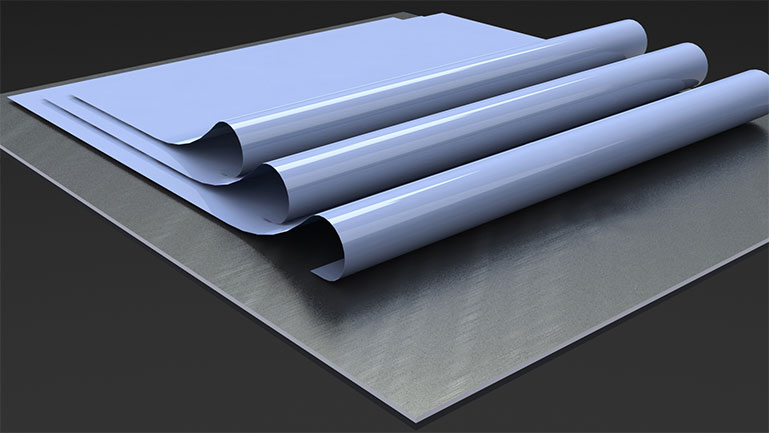In the industrial industry, when we think of corrosion, we most commonly think of it as something that occurs to the pipes, and most people know about the hidden dangers of corrosion under insulation (CUI). What many people don’t to consider when it comes corrosion the interior surface of the metal jacketing. When water is present in a jacketed insulation system and touching the interior surface of metal jacketing, corrosion can and does occur.
Just like CUI, this type of corrosion on the interior surface of insulation jacketing is a hidden, serious, and costly problem in all applications (hot and cold), with all metal jacketing types, and with all insulation types. As a jacket corrodes from the inside, it creates invisible weaknesses in the jacketing system that can allow further water penetration or damage to the insulation, vapor barriers, or pipes beneath the jacketing.
To prevent corrosion from occurring on the interior surface of metal jacketing, system designers typically specify one of three materials to line the interior surface of the jacketing:
- Polyfilm Moisture Barrier (PFMB): 3-layer protective polymer film
- Paint Moisture Barrier: 1 layer of paint lining the interior surface of the jacketing
- Polykraft Moisture Barrier: 1 layer of PE film with kraft paper backing
While each of these materials is used in the industry, they do not all offer equivalent performance. There are 5 reasons PFMB offers better corrosion protection for metal jacketing systems than either paint or polykraft moisture barriers.
1. PFMB is 3 layers thick: While paint and polykraft are both one layer thick, PFMB is made from three layers of separate materials: one layer of HDPE, one layer of Surlyn® and one layer of LDPE. Each of these layers is designed to be scratch-resistant and eliminate pinholes that can allow water to penetrate through to the jacketing.
2. Zero pinholes: Moisture barriers used on jacketing interiors are tested via ASTM C1785 to establish the number of pinholes per 50 square feet of barrier. Paint typically has more than 19 pinholes, while polykraft typically has around 16 pinholes. In comparison, PFMB has zero pinholes. This drastically reduces the ability for water to come into contact with the interior surface of the metal jacketing and cause corrosion.
3. Scratch-resistant: Since PFMB is three layers thick, it is considerably more scratch-resistant than paint or polykraft. When compared to paint which is easily scratched off or polykraft which tears easily, three-layer thick PFMB offers considerably greater durability. In industrial applications where materials must be robust and long-lasting, a scratch-resistant surface can be a mission critical feature to protect your metal jacketing system.
4. Excellent adhesion to the substrate: PFMB is factory heat-laminated to the metal jacketing substrate. This offers excellent adhesion to the metal surface, ensuring that it will be less likely to peel or flake off during in-service operation. If the moisture barrier lining the jacketing peels away from the metal substrate, it creates a weakness where water can penetrate.
5. Low water-vapor transmission rate: Unlike a polykraft barrier which has a water vapor transmission rate (WVTR) of approximately 1, PFMB a WVTR of <0.05. Additionally, since there is no paper in the construction of PFMB, it doesn’t have the potential to absorb water like polykraft. As the effort is to keep water from contacting the surface of the jacketing, using materials that prohibit water penetration can be key to successfully protecting your jacketing system.
PFMB offers simple, low cost, and effective protection against metal jacket and pipe corrosion by serving as a barrier to prevent crevice, pitting, and galvanic corrosion. To keep water from causing jacket and pipe corrosion, the moisture barrier must be water-resistant, pinhole-free, tough, scratch-resistant, and durable. Only PFMB offers all of these necessary properties while also being economical and easy to use.

